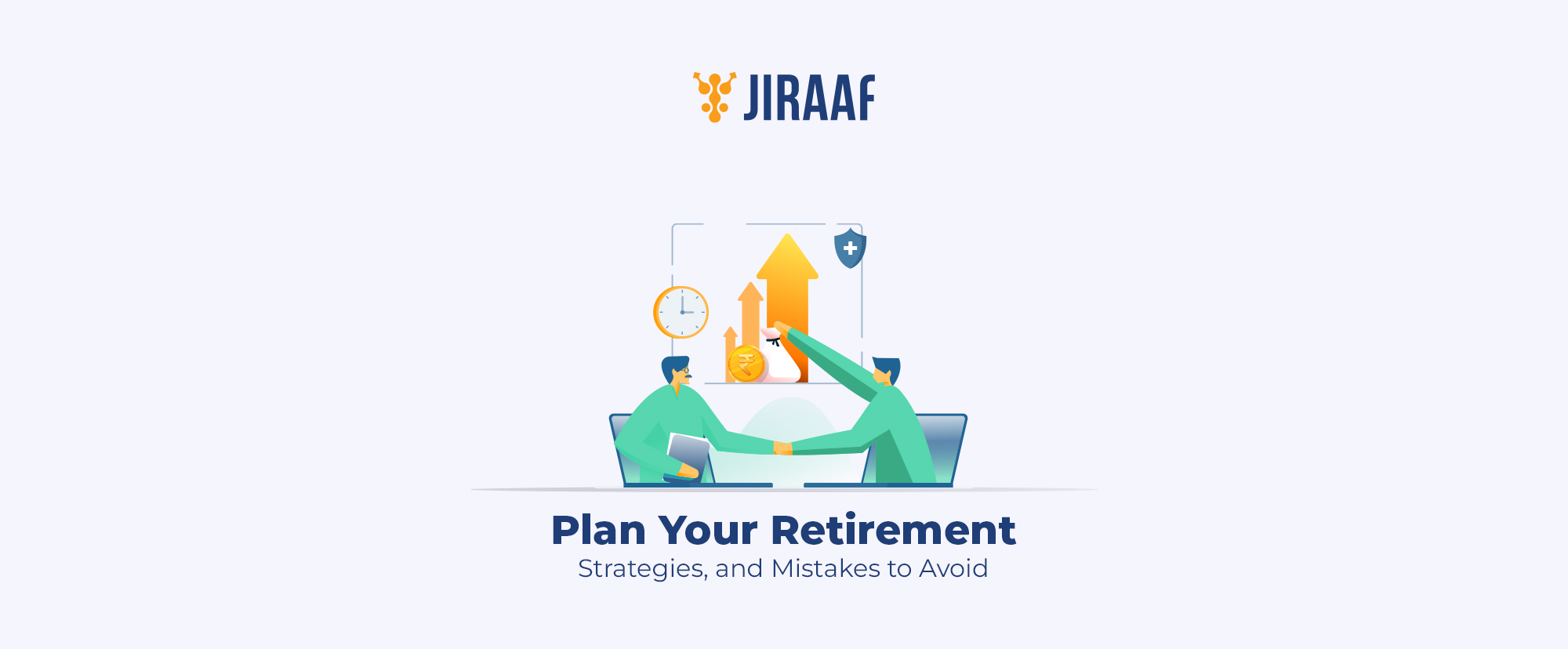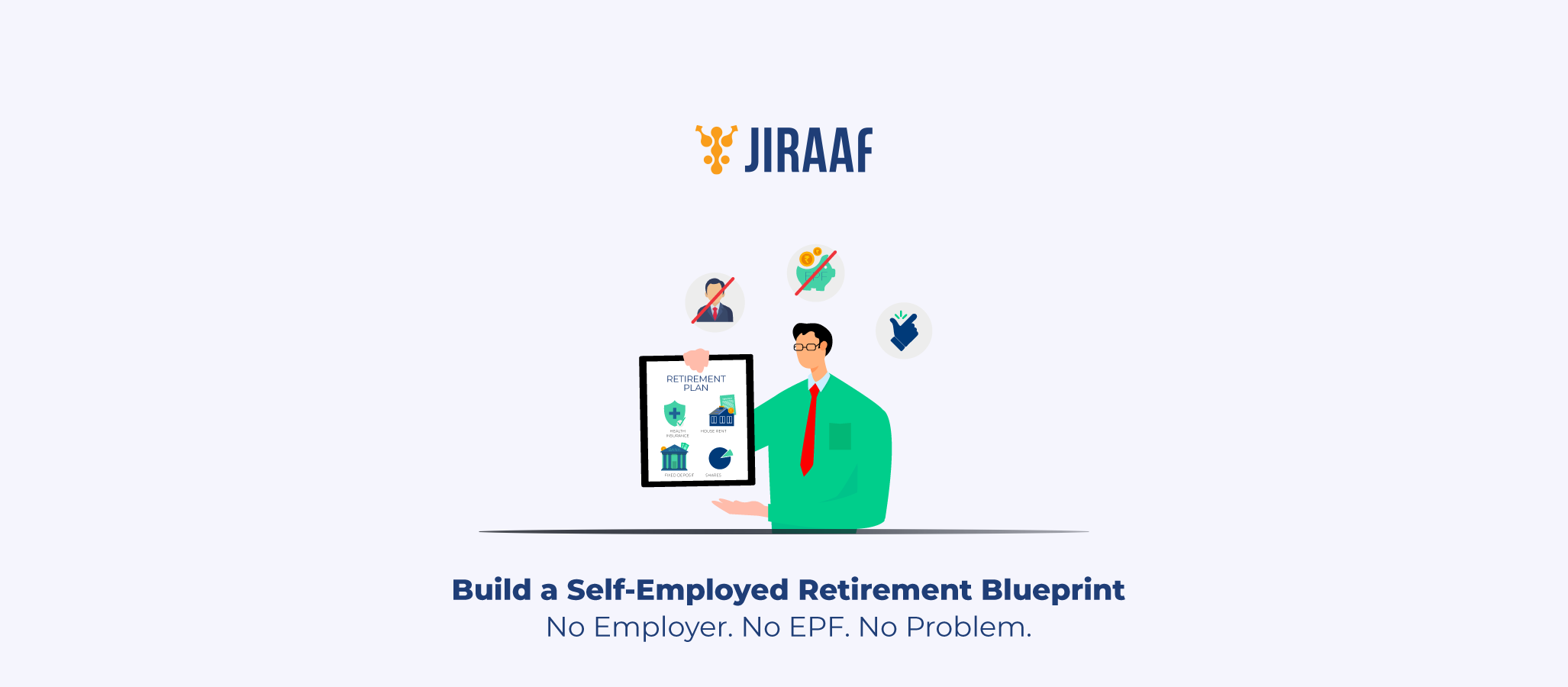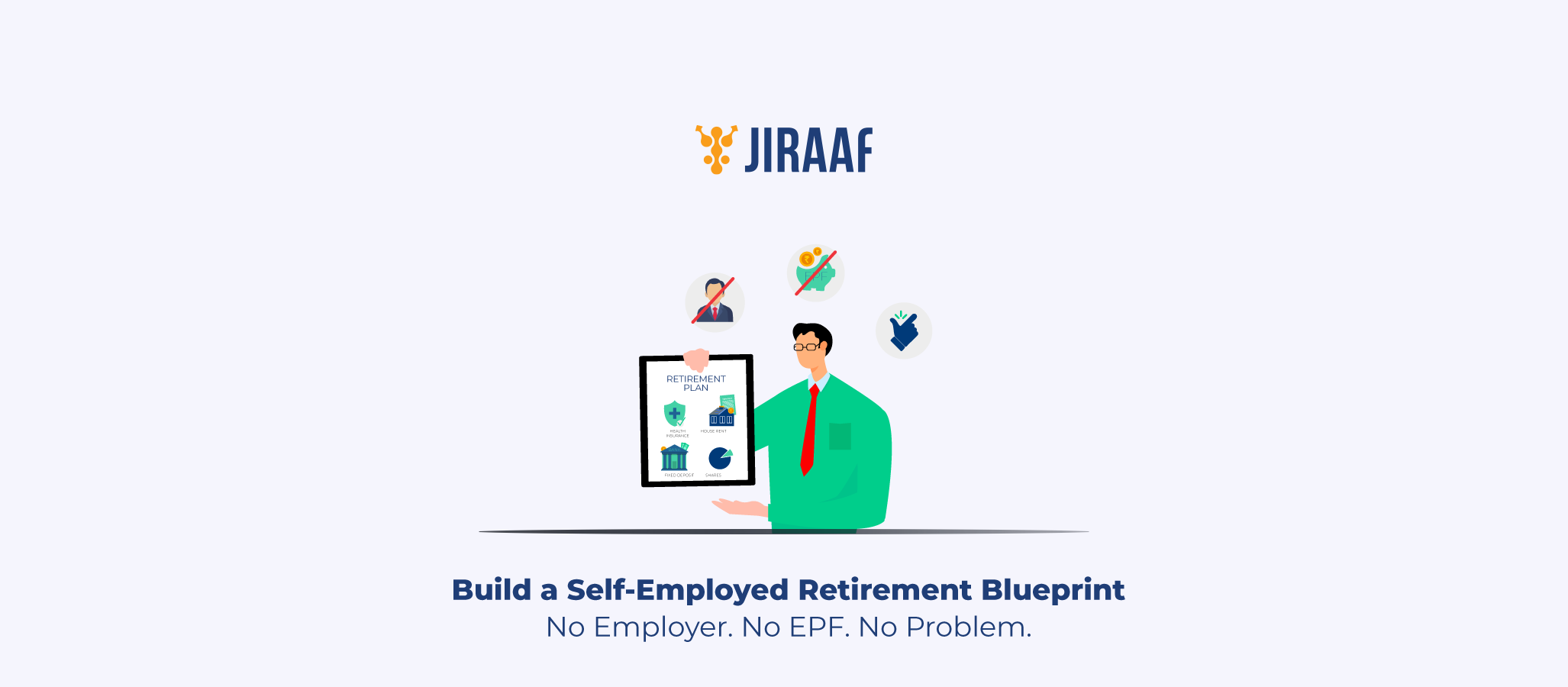One of the biggest purposes behind wealth creation and wealth preservation for everyone is building a fund for retirement. And in that journey, people are confronted with a myriad of questions. How soon should one begin building a retirement corpus? What amount is necessary to investment to ensure long-term financial security? What proactive measures can be taken to secure a stable income during retirement? Which investment instruments to opt for?
These questions can be daunting, yet they are very important to address for shaping a secure financial future.
Investing for Retirement: What Does It Mean?
Investing for retirement involves putting your money in financial assets such as stocks, bonds, or mutual funds with the goal of growing your wealth over time. It’s about building a portfolio that will generate returns to support your lifestyle after you stop working.
Why Investing for Retirement is Essential?
Investing for retirement is essential because it ensures financial independence and security in your later years when regular income from employment ceases. With inflation eroding the value of savings over time, investing helps your money grow and keep pace with rising living costs. Longer life expectancy also means you could spend longer in retirement, making it important to have a robust financial plan in place.
Planning your Retirement Fund
To effectively plan for retirement, it’s important to calculate how much you’ll need. Aim for at least 70% – 80% of your last drawn pre-retirement income per month to cover for your post-retirement expenses per month.
While some expenses like EMI payments, work commutes, and lunches with colleagues may decrease, healthcare, leisure activities, and travel costs often increase during retirement. These expenses can be significant, making it essential to prepare for.
Consider inflation and other factors like financial emergencies that you may face, when you calculate your retirement corpus.
How Much Do You Need to Retire?
There is no right or wrong answer to this. But the earlier you start, the more time you must save and invest, and more potential your money can grow. By investing early, you can also afford to take more risks with your investments, which can lead to higher returns in the long run.
Ideally, you should start with retirement planning from the time you start earning a stable income in your 20s.
Now, when a person in their 20s thinks of investing for retirement, what kind of investments should be picked?
If you are in your 20s and are an amateur investor, with fewer financial responsibilities, you could consider investing in funds like Multicap or Large cap Mutual Funds via a monthly Systematic Investment Plan (SIP).
Multicap funds are mutual funds that are required by SEBI to invest at least 75% of your total assets in equity and equity-related instruments at any given point in time. Out of this 75%, a minimum of 25% must be invested in large-cap stocks, another 25% in mid-cap stocks, and the remaining 25% in small-cap stocks. Large-cap companies are the top 100 publicly listed firms in India with stable growth rates and less sensitive to capital market volatility.
Thus, for new investors multi-cap and large-cap funds will be a great way to start building your portfolio given the diversification these funds provide for relatively competitive returns in the long term.
Different Types of Investments for Retirement
1. Stocks
Investing in stocks allows individuals to buy shares in companies, providing the potential for high returns over the long term. Stocks are suitable for those with a higher risk tolerance, as they can be volatile in the short term.
2. Bonds
Bonds are fixed-income securities that provide regular interest rate and return the principal amount upon maturity. Bonds are generally considered safer than stocks and are ideal for conservative investors or those nearing retirement.
3. Mutual Funds
Mutual funds are pooled money from multiple investors to invest in a diversified portfolio of equities, bonds, or other securities. Mutual funds are managed by professional fund managers, making them suitable for individuals who prefer a hands-off approach to investing.
4. Exchange-Traded Funds (ETFs)
ETFs are similar to mutual funds but trade on stock exchanges like individual stocks. They offer diversification and typically have lower fees compared to mutual funds. ETFs are ideal for investors seeking flexibility and lower costs in your retirement portfolio.
5. Real Estate
Investing in real estate can provide rental income and potential appreciation over time. Real estate can diversify your portfolio and act as a hedge against inflation. Whether purchasing rental properties, real estate investment trusts (REITs), or real estate platforms, investors can benefit from both passive income and long-term capital gains.
6. Retirement Accounts
Utilising tax-advantaged retirement accounts, such as an Individual Retirement Account (IRAs), and Roth IRAs, is crucial for retirement savings. These accounts offer tax benefits that can enhance the growth of investments over time.
Best Investment Strategy for Retirement
National Pension Scheme (NPS)
The National Pension Scheme (NPS) is a central government-initiated retirement savings scheme designed to encourage investors to build a substantial retirement corpus. It is open for employees of public; private and unorganised sectors except for those from armed force. It allows you to invest in a mix of equities, government securities, and corporate bonds, providing a balanced approach to growth and security. With NPS, you benefit from tax deductions on your contributions, making it a tax-efficient option. The scheme also allows for partial withdrawals of about 25% of the contribution and maximum three partial withdrawals in NPS account under certain conditions, offering some liquidity while primarily focusing on long-term wealth accumulation.
Senior Citizen Savings Scheme (SCSS)
The Senior Citizen Savings Scheme (SCSS) is specifically designed for individuals aged 60 and above. Senior citizens can invest a lump sum in the scheme, individually or jointly. This government-backed scheme provides a higher interest rate particularly 8.2% p.a compared to regular savings accounts, making it an attractive option for senior citizens seeking to generate a steady income during retirement. The interest earned is payable 1st month of each quarter, that is 1st April, 1st July, 1st October and 1st January. Ensuring regular cash flow, and the investment is eligible for tax benefits under Section 80C up to 1.5 lakhs with a tenure of five years.
Public Provident Fund (PPF)
The Public Provident Fund (PPF) is a long-term savings scheme backed by the government, making it a highly secure investment option for retirement. With a lock-in period of 15 years, PPF encourages disciplined savings while offering attractive interest rates, which are compounded annually. Contributions to PPF qualify for tax deductions under Section 80C up to 1.5 lakhs p.a making it a tax-efficient choice as well. Given its safety, tax benefits, and potential for steady returns, the PPF is a cornerstone of retirement planning for many individuals.
Pension Plan
A Pension Plan is an insurance product that helps you accumulate funds during your working years to provide a steady income after retirement. These plans often combine investment and insurance, allowing policyholders to build a corpus through regular premium payments. Upon retirement, the accumulated amount can be converted into a regular income stream, ensuring financial security during retirement. Many pension plans offer flexibility in terms of premium payment frequency and the option to choose between lump-sum payouts or annuity payments.
Adjusting your Retirement Strategy as you Age
Your investment strategy should evolve as you age. In your 20s and 30s, focus on growth-oriented investments like equities. As you approach your 40s and 50s, shift toward more conservative options to protect your capital. Regularly reassessing your strategy ensures your plan aligns with your changing financial needs.
Common Mistakes to Avoid When Investing for Retirement
- Overlooking Retirement Accounts: Not utilising tax-advantaged retirement accounts, such as IRAs, can hinder your savings potential. These accounts offer tax benefits that can help your investments grow more efficiently, making them an essential component of any retirement strategy.
- Not Taking Advantage of Employer Matches: If your employer offers a retirement plan with matching contributions, not taking full advantage of this benefit is a missed opportunity. This is essentially free money that can significantly boost your retirement savings over time.
- Not Having a Clear Retirement Plan: Investing without a clear retirement plan can lead to confusion and poor decision-making. It’s essential to set specific retirement goals, including desired lifestyle, income needs, and timelines, to guide your investment strategy and keep you focused on your objectives.
The Bottom Line: Invest for Retirement
To sum up, it’s true that many of us rarely pause to think about retirement. We’re often caught up in the hustle of day-to-day work, family responsibilities, and immediate financial priorities. But pause for a moment, post-retirement requirements is not something we can afford to ignore. After a lifetime of hard work, the last thing you don’t want is to be financially dependent on your children or to face a future filled with uncertainty. Planning now ensures that you can enjoy your later years with dignity, comfort, and the freedom to make choices that truly bring you happiness.
Discover fixed income investments with Jiraaf, a SEBI registered online bonds platform that educates and brings access to a wide array of bonds. Sign up today to explore diversified fixed income investment opportunities to support your goal-based wealth creation journey. Start investing!




